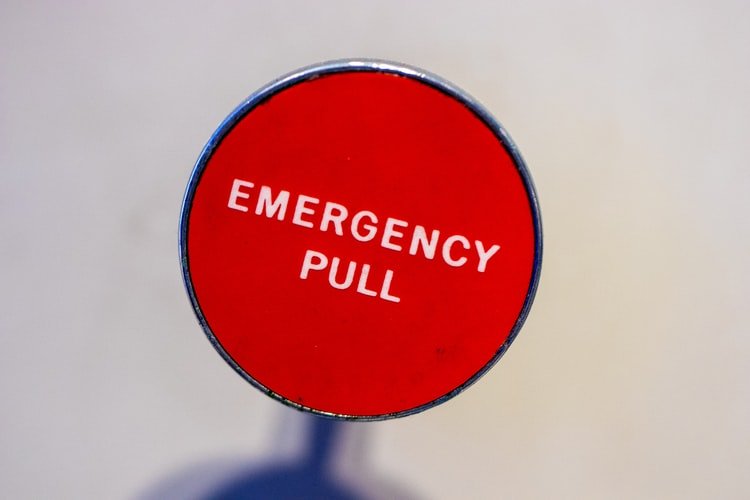Crisis management is a critical function any organization must consider and pay attention to. Even a small failure can result in irreparable harm to teams, stakeholders, and losses for a business.
Product managers and project managers are an integral part of crisis management teams. Before a crisis strikes, they should think about how a disaster may affect their colleagues, customers, the public and their company’s value.
A crisis is an evil that can beat companies anytime and anywhere. Detailed planning is the key to survival. However, the crisis confronts us with many questions: How do you manage crisis management? How to feel safe during an emergency situation? How to raise crisis management to the perfect level? How to prioritize during a crisis? What are the phases of crisis management? What are the required aspects of a crisis management plan?
In this post, we try to figure it out.

Contents
Crisis Management Definition 
What is crisis management about?
Crisis management is a set of strategies and actions prepared ahead to help organizations deal with a sudden and negative event. This is also about minimizing damage and allowing companies to recover quickly and painlessly.
Crises in business may come in any form and they often have the potential to threaten the health of a company by damaging its reputation, business operations, affecting finances, or harming employees. The causes of the crisis may have internal or external roots. It is recommended to be prepared ahead of time with a well-designed crisis management plan.
It doesn’t matter if you work in the financial sector, manage healthcare projects, lead a software development team or sell books online – the crisis can affect each of you.
“Crises and deadlocks when they occur have at least this advantage, that they force us to think.”
Jawaharlal Nehru
What are the types of crises?
As a manager or a team member, you may suddenly face any kind of crises from this list:
1. Financial crisis. It happens when a company experiences a drop in demand for whatever it is it proposes and sells, whether it is a product or service. The business loses value in those assets. Additionally, it cannot afford to pay off debts.
2. Organizational crisis. Sometimes a business can wrong the clients by taking actions that negatively influence them. For example, companies can keep important information from clients who deserve to know the details about a specific topic.
3. Personnel crisis. It may occur when a particular team member is involved in any unethical or illegal activity. This situation can be faced in or out of the workplace. It can be related to the work-life or personal life of the individual.
4. Accidental disaster. It happens unintentionally by human cause. An example of an accidental disaster that can affect a workforce is a fire. It can leave a lot of damage to the company and lead to serious consequences.
5. Natural disasters. They typically relate to environmental crises that cannot be prevented by people. Global floods, earthquakes or tornadoes are bright examples of such disasters.
6. Technology disasters. Many organizations involve tech solutions and sometimes even a slight disruption in a company’s technological structure can seriously cause all-important operations. Cybercrime crises and critical virus attacks can be also included here.
7. Conflict of interests. This kind of crisis can be very tricky to manage because it may contain political factors. For example, rumors and product tampering can be the reasons for a conflict of interest crises.
There are also other types of crises that include workforce violence and employees’ confrontation crises (boycotting, go-slow, picketing, and so on).

What Are the Five Stages of a Crisis?
What Does the Crisis Management Process Include? The most important part of crisis management is managing the crisis itself; however, there are some other primary steps.
1. Pre-crisis warnings
Perhaps we cannot always predict the occurrence or timing of a crisis, but there are often signs we can consider that serve as a warning.
Preventing any potential crisis situation is the first part of crisis management. To be ready for any emergency situation, you should have a crisis management plan or a contingency plan. You may even draft crisis communication messages you will rely on in times of crisis.
2. Risk assessment
This begins immediately after a crisis starts. The key team players at your organization start to assess the impact the situation might have on your customers, employees and the entire business.
3. Response
The next step includes managing a crisis and a timely response.
At this stage, you put your crisis management plan into action. Make sure that all employees, stakeholders, and contacted, initial messages are released, and company safety is prioritized.
4. Resolution
This stage means that every participant involved in the crisis resolution should have fulfilled their duties. At this point, the crisis should be under control. You should have a clear picture of actions that will be used to return your business to normalcy.
5. Post-crisis recovery
Do not expect that your crisis management work is finished after a crisis subsides. It is crucial to remain in contact with customers, employees, and stakeholders and be able to answer questions.
Now, let’s dive into the crisis management plan and how to create one for your business.
What is a Crisis Management Plan? 
A crisis management plan is an established direction a business follows when dealing with any unexpected emergency situation. This plan should be completed before a crisis begins so your business is prepared to utilize it to rectify possible unexpected events.
Any plan begins with clear goals. You should pay enough attention to people’s protection, and ensuring the key audiences are kept informed, and the organization survives. Your emergency plan should contain particular actions that will be taken during the crisis.

10 Tips on How to Create an Effective Crisis Management Plan
- Identify the type of crisis.
- Evaluate the impact of the crisis on your business.
- Draft the actions you’d need to take to resolve it.
- Assign a person from your workforce who will get the responsibilities of a crisis management manager.
- Employ a professional crisis manager if you have no possibility to assign.
- Train all team members who will need to be familiar with your plans.
- Initiate training or special courses on handling crises. You can periodically run fake operations to keep refreshing stakeholders on emergency responses to crises.
- Implement smart systems capable to monitor or detect foreseeable crises signals early enough.
- Prepare a list of key persons and their contacts. Display the contact info where anyone will see and easily access it.
- Revisit and update your plan regularly.
What are the benefits of a crisis management plan?
- It helps to maintain the company’s reputation with clients, competitors, and industry leaders during and after a crisis.
- It improves the health and safety of everyone who works for your company.
- It gives you a sense of confidence and peace of mind as you’ll be ready for any situation that comes your way.
- Finally, it increases productivity because everyone will know their roles and functions throughout a crisis.
What are the jobs involved in crisis management?
If you are looking for a crisis management team, you will face a number of positions and job titles you’ll come across along the way. Here’re some of them:
- Crisis manager, who compiles and leads and implement a crisis management plan. He or she is also responsible for ensuring the plan is carried out accordingly during a crisis.
- Crisis management advisor – a specialist who usually works directly beneath a crisis manager and assists with anything he/she can help. Their responsibilities include supporting their management efforts and ensuring they have all the tools and resources required to fulfill their job.
- Emergency management director in a crisis situation communicates directly with law enforcement. He/she calls for support or assistance of first responders and emergency officials.
- Public Relations specialist helps to handle all contact with customers, team members, competitors, followers on social media and the press.
- Human Resources advisor – a person who is also rather helpful in any type of crisis situation. The HR adviser ensures that you have an updated database of all of the contacts, employees, advisors, and responders.
- Legal advisor will help to ensure you act legally when resolving a crisis and follow all required steps to check there are no other issues that surface along the way.
Conclusion
Crises may happen at any time. Unfortunately, no one business has an immune system to resist them. However, if you ensure your company is prepared for any possible crises, you will able to maintain a positive reputation with your customers, employees, and competitors.
Creating a crisis management plan, consider the possible crisis stages and combine people ready to help you through any unforeseen event. Be sure, these efforts will help you to prevent your business from negative repercussions.






